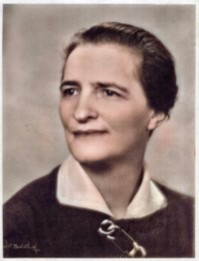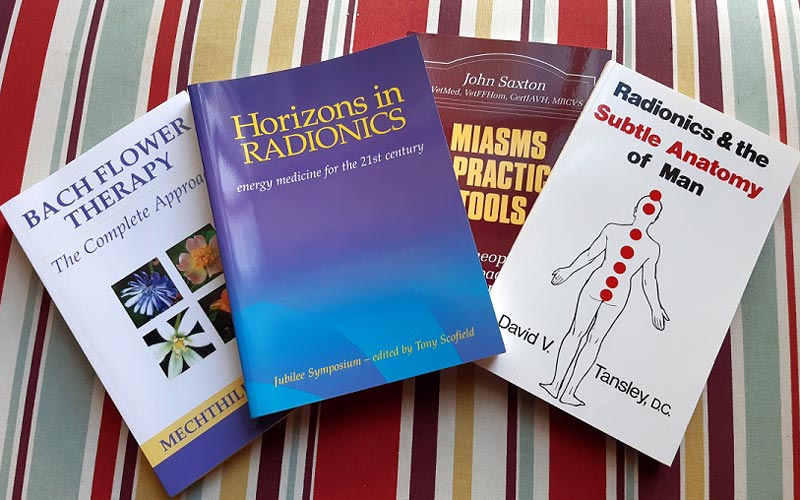Origins of Radionics
Radionics is a healing modality mainly concerned with energy patterns. Its origins lie in the work of Albert Abrams (1863-1924) who qualified as a doctor in America and obtained a second medical qualification from the University of Heidelberg. He returned to America to take up an appointment as demonstrator in Pathology Stanford University Medical School, finally being appointed Director of Clinical Medicine.
He possessed great skill in percussion. It was while employing this technique on a patient presenting with an epithelioma of the lip that he discovered an area in the region of the stomach which gave a dull note instead of the hollow sound as expected. There was no abdominal pathology to account for this, and subsequent testing confirmed that the dull area found on percussion was linked to the presence of the epithelioma on the lip, and to no other factor. Further experiments established that this area of dull percussion was common to all cases of cancer. Different areas were also identified as being linked to other clinical conditions.
Abrams thought that some ‘radiation’ from the diseased tissue must be affecting the muscle tone in the areas he was percussing. From this he reasoned that it should be possible for a healthy person to be affected by the ’radiation’ if in contact with the patient or, in the experiments he performed, a cancer removed from that patient. The experiment, repeated many times, established that a piece of diseased tissue could affect the nervous system of a healthy third party.
Abrams further established that direct biological contact between a third party and sample was not necessary. The two could be connected by an electric wire and still give the response. However, problems arose when he found that cases of cancer and syphilis gave reactions in exactly the same area. Abrams thought that if the phenomenon was a ‘radiation’ from the diseased tissue, then it could be electronic in nature. He therefore introduced a resistance-box between the patient and a third party and the problem was solved. Cancer gave a reaction when there was a resistance of 50 ohms in the system; syphilis only reacted with 55 ohms present. It also became possible to differentiate between other conditions on the basis of the resistance required in the circuit. Thus the concept was born of a ‘rate’ for a particular condition based on its electrical resistance.
Abrams later found that contact with the patient could be maintained by means of a ’witness’, which provides an exact energy replica of the subject. In the early days a drop of blood was used but a sample of hair is usually used nowadays.
Abrams later developed a treatment device, the Oscilloclast. This machine supposedly transmitted back at the diseased tissue the same electronic vibrations it was emitting until the patient was ‘clear’ of the electronic reactions in the subject. Abrams had thus devised a system for the identification of diseased states by means of their energy vibrations, and the correction of those states by the application of complementary vibrations. Subsequent work by others showed that both the diseased states and the complementary vibrations may be expressed as mathematical formulae, or ‘rates’, the healing rates involved being either general healing concepts, colour, herbal, or homoeopathic remedies.
Despite the use of instruments Abrams recognised that that the most sensitive instrument available was still the human nervous system. It is the radiesthetic faculty that is the basis of radionics, hence the prominence that dowsing has attained in the practical application of these ideas, as the pendulum has largely replaced the stick pad.
Subsequently, many people developed Abrams’ vision, largely in America at first and it was the users of one of the many early instruments, the Calbro-Magnowave (1924), who coined the term ‘radionic’ in the late 1920s to describe their equipment.
Ruth Drown (1892-1965), an American chiropractor, took over the  banner of radionics after Abrams’ death (although she would never call her technique ‘radionics’). She produced a compact modification of Abrams’ instrument with 9 tuning dials set in rows of 3. Seven could be set at 10 different positions (hence the Base 10 Instrument). The other two variable resistors were marked from 1-100. She incorporated the rubber stick pad in place of the abdomen of the ‘subject’. She also discovered that treatment could be achieved at a distance by using a witness of the patient (i.e. a blood spot on blotting paper). At first, a Drown analysis still required the presence of the patients who sat with their feet on metal plates connected to the diagnostic instrument. Ruth Drown worked out an atlas of ‘rates’ from the dials on her instrument. Treatment involved broadcasting the same rates back to the patient.
banner of radionics after Abrams’ death (although she would never call her technique ‘radionics’). She produced a compact modification of Abrams’ instrument with 9 tuning dials set in rows of 3. Seven could be set at 10 different positions (hence the Base 10 Instrument). The other two variable resistors were marked from 1-100. She incorporated the rubber stick pad in place of the abdomen of the ‘subject’. She also discovered that treatment could be achieved at a distance by using a witness of the patient (i.e. a blood spot on blotting paper). At first, a Drown analysis still required the presence of the patients who sat with their feet on metal plates connected to the diagnostic instrument. Ruth Drown worked out an atlas of ‘rates’ from the dials on her instrument. Treatment involved broadcasting the same rates back to the patient.
By careful examination of Abram’s reflexophone and oscilloclast W.E. Boyd (1891-1955), a Scottish homeopath, was convinced that Abrams’ machine was some kind of wireless and redesigned the circuit as a tuneable radio circuit (which underwent many modifications over the years). As with Abrams, a human subject was required as part of the circuit. Boyd and others used the machine to select homoeopathic remedies for treatment.
Boyd’s Emanometer was the apparatus that was so successfully tested by the Horder Committee (1925) which concluded that: “… the statement that the fundamental proposition underlying, in common, the original and certain other forms of apparatus devised for the purpose of eliciting the so-called electronic reactions of Abrams, is established to a very high degree of probability”.
Despite the positive report the instrument was not sanctioned by the investigating committee as they could not understand how it could work but it was used for many years after Boyd’s death, mainly by homeopaths for selecting remedies.
After World War 2, and after prosecution of Ruth Drown in America for selling her instruments, developments in radionics largely moved to Britain. George de La Warr (1904-1969) built his own instrument and soon discovered that the instrument could work without an electric power source. He believed some other type of energy was involved, rather than electricity. Other important workers include Bruce Copen who established the Bruce Copen Laboratories in 1947, David Tansley (1934-1988) who recognised that radionics was in fact a form of energy medicine working initially at a level other than the physical. Tansley pioneered the concept of measuring the activity of the chakras and also demonstrated that illness and disease appeared to manifest in these subtle areas before causing pathological symptoms. Darrell Butcher (d. 1965) recognised the role of pattern in radionics and introduced the Pegotty board. Malcolm Rae (1913-1979) developed the Base 44 instrument to increase the number of potential rates and he also developed the magneto-geometric instruments that used cards with patterns rather than rates for radionic purposes.
Radionics has now embraced the digital age with a range of instruments that use digital displays and programming rather than analogue dials and also there are available a number of computerised instruments. Despite these impressive advances in radionic instrumentation behind it all is the practitioner and her consciousness, and this is the key to it all.


